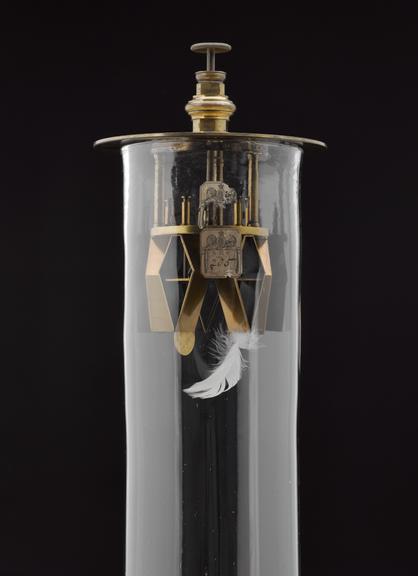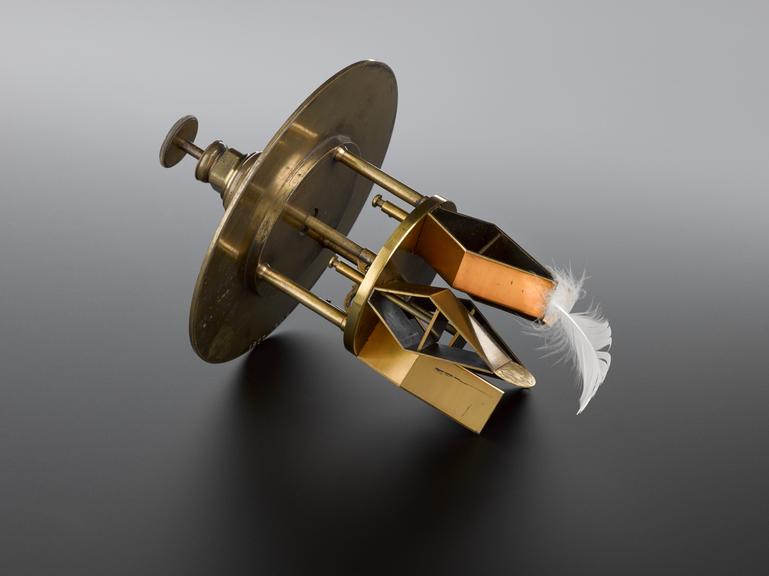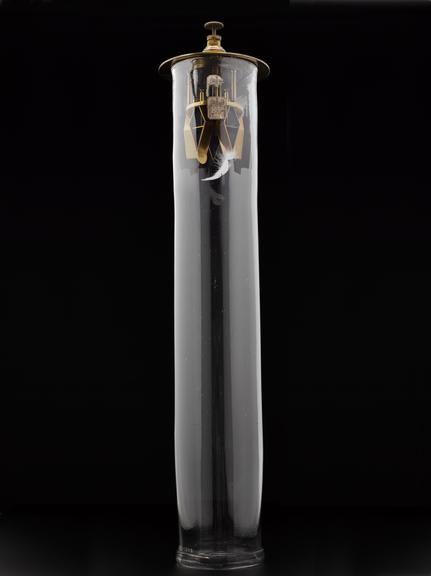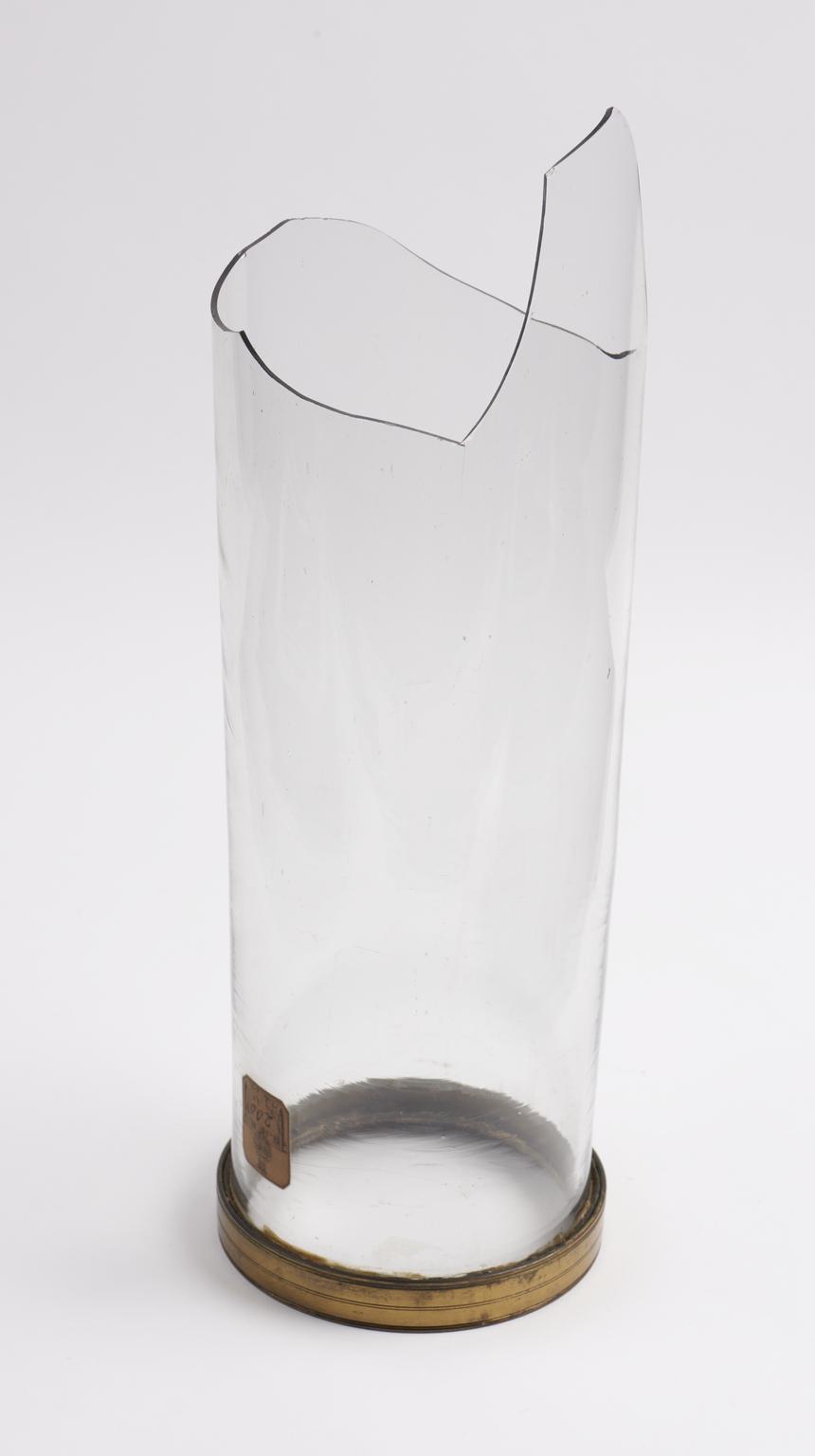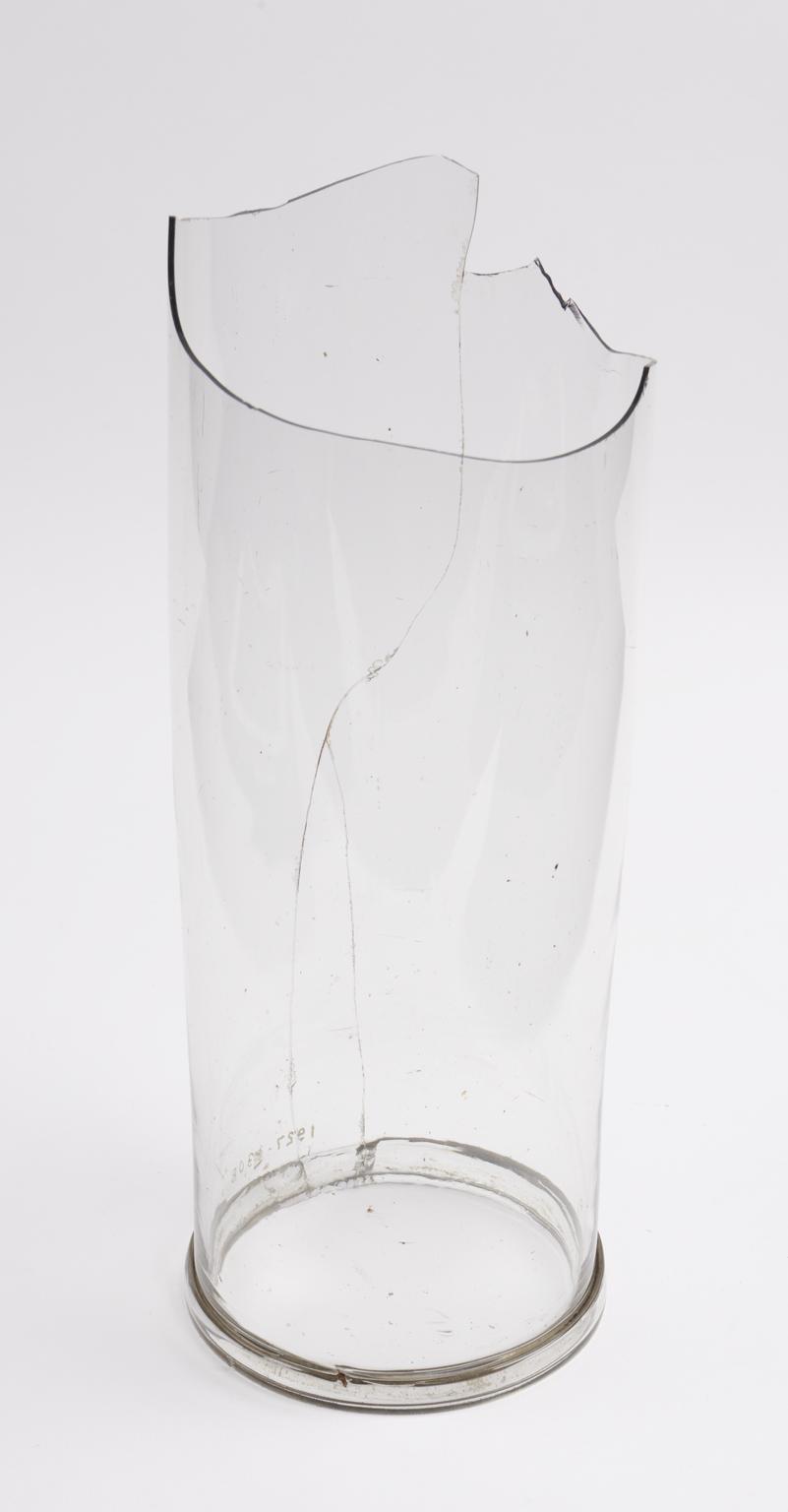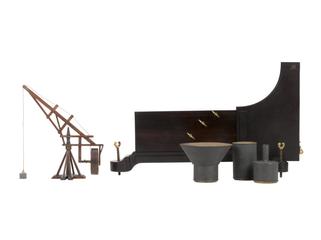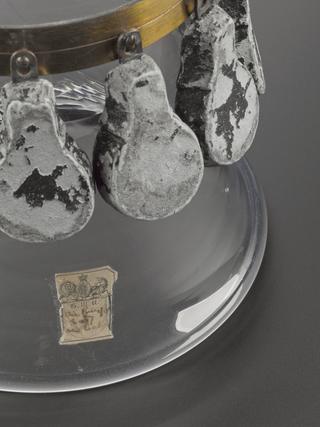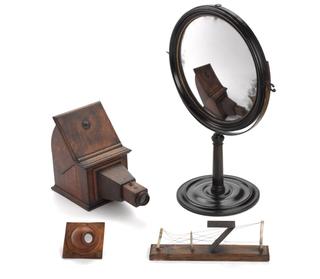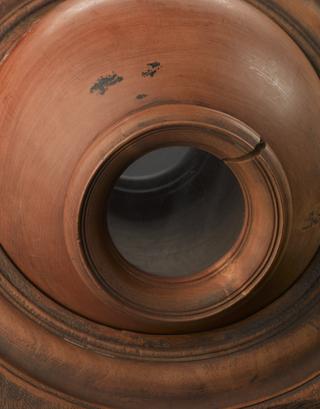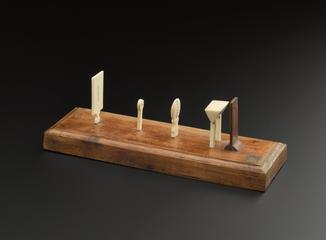Barrel and Device from George III's guinea and feather' apparatus
Apparatus for guinea and feather experiment consisting of a glass cylinder with brass release device.
More
This apparatus was made for King George III in 1761 by George Adams, very soon after he ascended the throne in 1760. It was part of Adams' pneumatics lectures and was intended to be used with the air pump.It allowed the demonstrator to explain the effects of a vaccum on falling objects. The apparatus consists of a glass barrel with a brass release device. The air was pumped out of the glass tube so that there was no resistance to a falling object. A feather and a golden guinea coin were then released simultaneously, and seen to fall at the same rate.
- Measurements:
-
overall: 630 mm x 170 mm diameter, 4.43 kg
- Materials:
- glass , brass (copper, zinc alloy) , paper (fibre product) and animal remains
- Object Number:
- 1927-1308 Pt1
- type:
- demonstration equipment
- Image ©
- The Board of Trustees of the Science Museum




